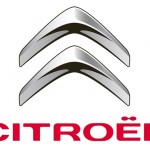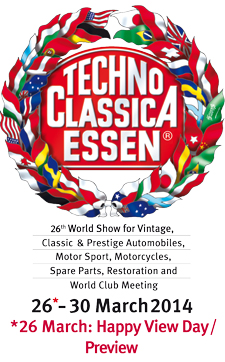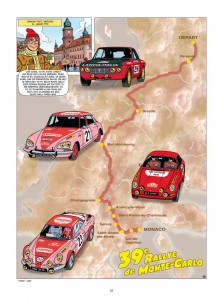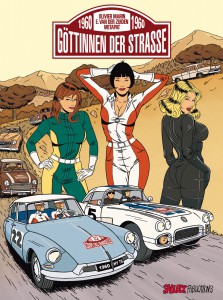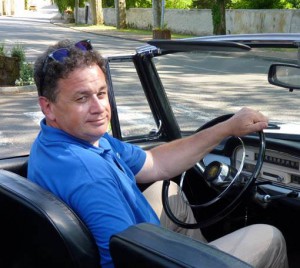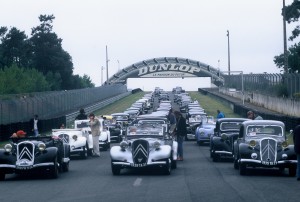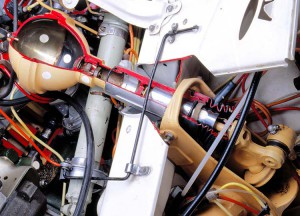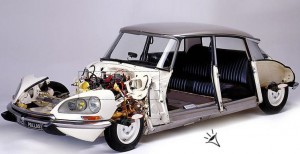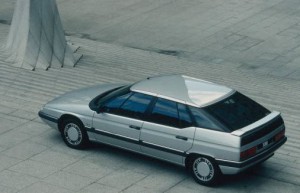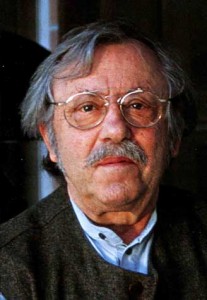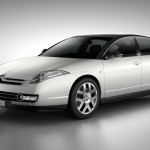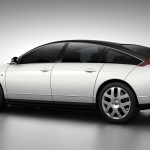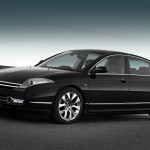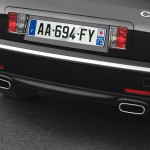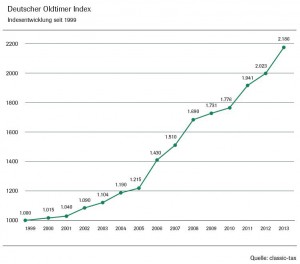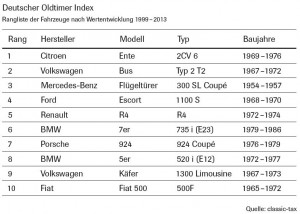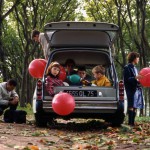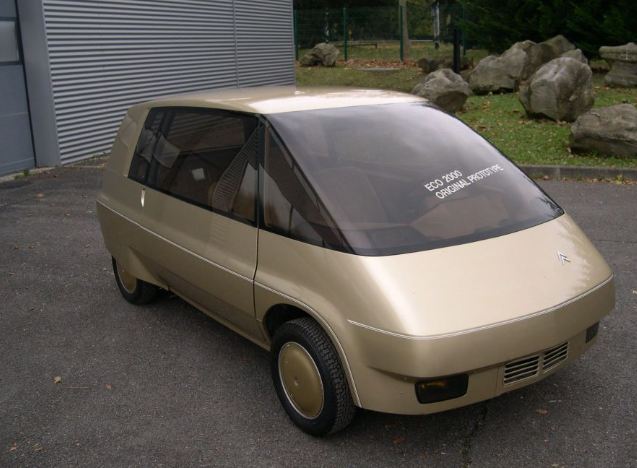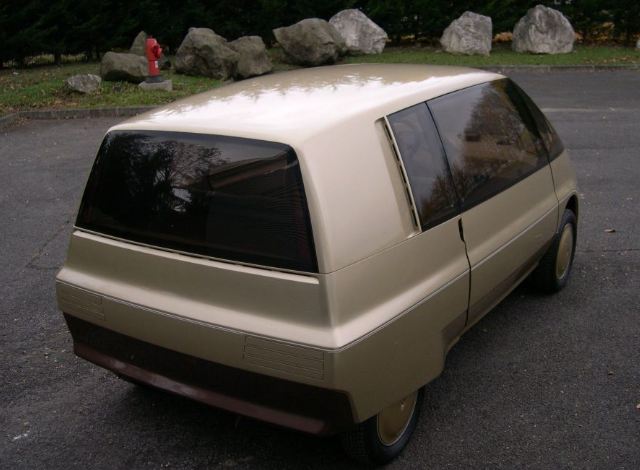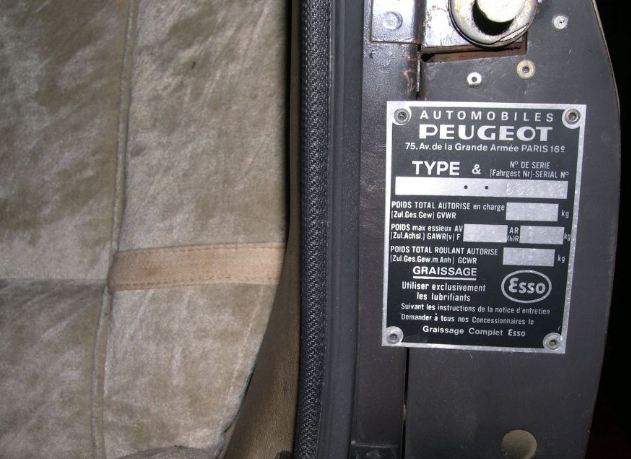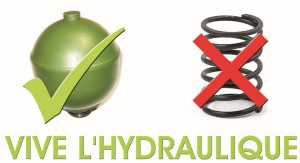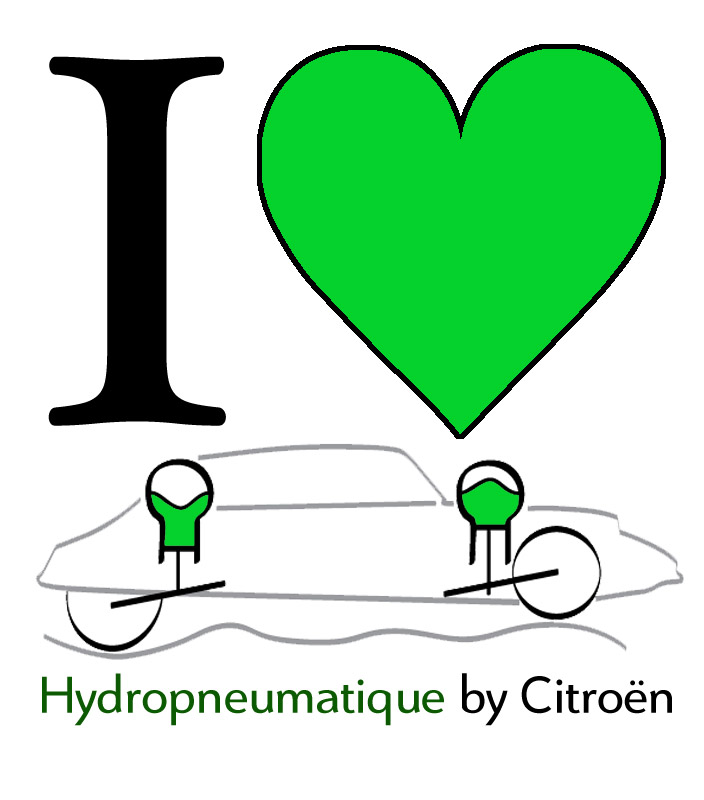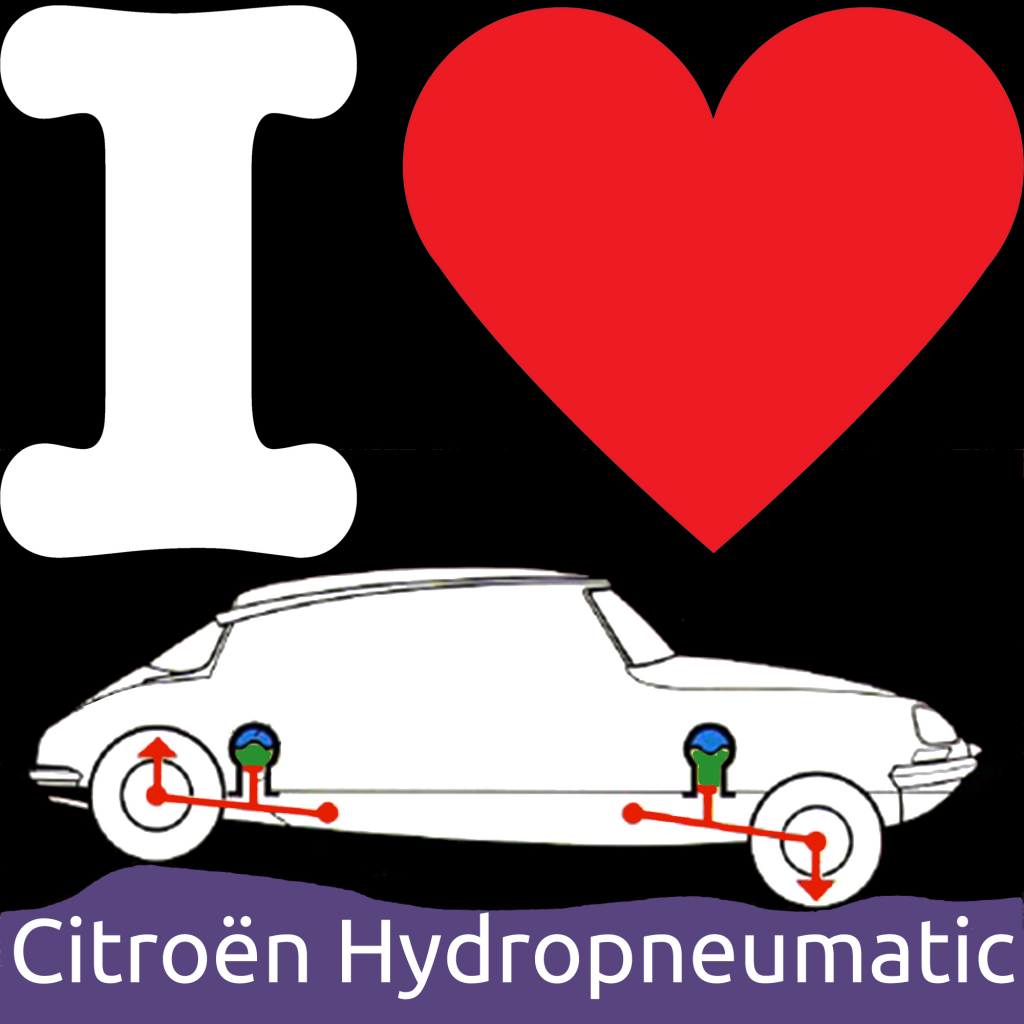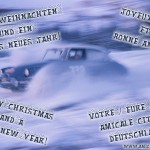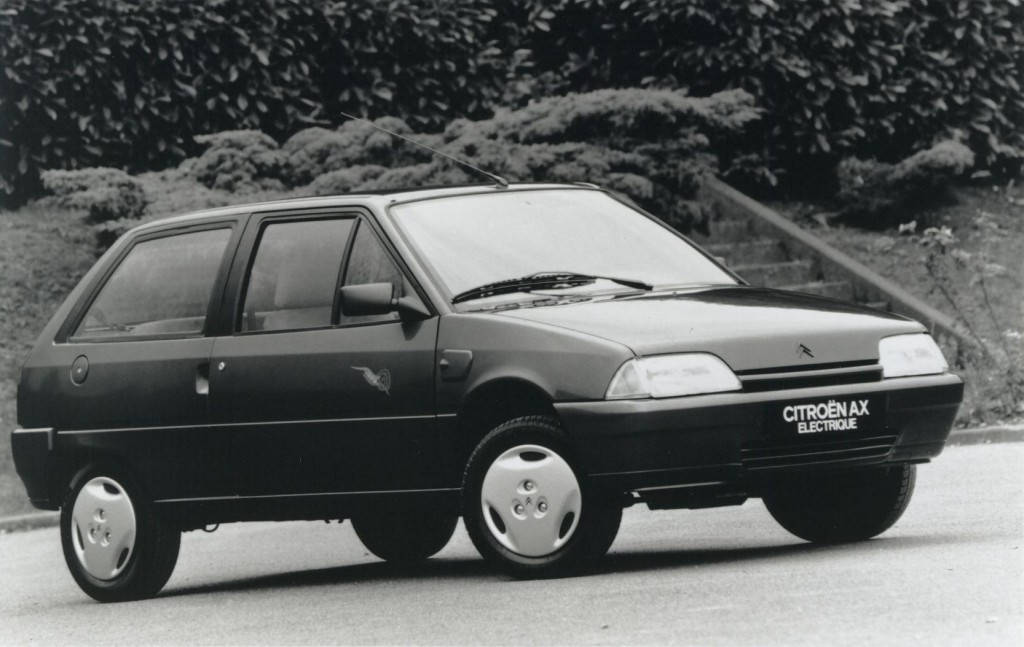(English below: “First study about the vintage car market in Germany”)
Wachstumsmarkt zwischen Ratio und Emotion
Der Bestand an “Classic Cars” (Young- und Oldtimer) ist in den vergangenen fünf Jahren kontinuierlich um durchschnittlich 8 Prozent gewachsen und umfasst derzeit gut 6,5 Mio. Fahrzeuge. Der Markt für Young- und Oldtimer steht für ein jährliches Umsatzvolumen von 14,1 Mrd. Euro und umfasst Wartung und Reparatur der Fahrzeuge, die zwischen 15 und 29 Jahre (Youngtimer) bzw. 30 Jahre und älter (Oldtimer) sind, sowie in deren Umfeld getätigte Ausgaben. Der Kaufpreis oder Wert der Fahrzeuge ist dabei noch nicht berücksichtigt.
Classic Cars machen 14 Prozent des gesamten Pkw- und privat genutzten Transporter-Bestands (44,7 Mio. Fahrzeuge) aus. Auch in den kommenden Jahren ist mit weiterem Wachstum zu rechnen. Zu diesem Ergebnis kommt die Marktstudie „Wirtschaftsfaktor Young- und Oldtimer“, die von der BBE Automotive GmbH im Auftrag von VDA, VDIK, ZDK, Bosch, Vredestein, FSP (Partner von TÜV Rheinland), Württembergische Versicherung, Santander, dem Fachmagazin Oldtimer Markt und dem Automobilclub AvD erstellt wurde. Erstmals liegen damit umfassende und verlässliche Daten über den Markt für Classic Cars in Deutschland vor.

Auf einer gemeinsamen Pressekonferenz in Frankfurt am Main stellten VDA, VDIK und ZDK mit BBE die Studie vor, die den Bestand von Classic Cars anhand der Daten des Kraftfahrt-Bundesamtes (KBA) aufbereitet hat, auf einer bundesweit angelegten Befragung von mehr als 1.700 Young- und Oldtimerfahrern basiert und zudem das über 13.000 Fahrzeuge umfassende Oldtimerangebot der Fahrzeugbörsen analysiert.
Robert Rademacher, Präsident des Zentralverbandes Deutsches Kraftfahrzeuggewerbe (ZDK), betonte: „Die Studie zeigt, dass es drei Gruppen im Markt für klassische Automobile gibt: die ‚echten Oldtimer‘ mit einem Alter von 30 Jahren und älter; die Youngtimer, die als Freizeit-Fahrzeuge genutzt werden, und schließlich die über 15 Jahre alten Pkw, die trotz fortgeschrittenen Alters noch im täglichen Gebrauch sind.“ Es sei bemerkenswert, wie stark der Markt in „Emotion“ und „Ratio“ geteilt sei: 39 Prozent der Fahrzeuge zählen zu „echten“ Oldtimern (620.000 Einheiten) oder Youngtimern (1,94 Mio.), die vor allem in der Freizeit genutzt werden; 61 Prozent (3,98 Mio. Einheiten) sind ältere Fahrzeuge, die noch immer im täglich Gebrauch sind.
„Diejenigen, die ihr über 15 Jahre altes Auto noch tagtäglich fahren, sind auf diese Art der kostengünstigen individuellen Mobilität angewiesen. Die andere Gruppe, also die Halter von Oldtimern oder Youngtimern, die diese Autos nur während der Freizeit nutzen, leben die ‚Faszination Auto‘. Sie haben eine starke emotionale Bindung an diese alten Fahrzeuge. Und sie geben deutlich mehr Geld für Wartung, Erhaltung und Pflege je Fahrzeug aus: Im Schnitt sind es beim Oldtimer jährlich knapp 5.300 Euro, der Besitzer eines Freizeit-Youngtimers investiert pro Jahr und Fahrzeug 2.900 Euro – während der Fahrer eines Youngtimers, der täglich genutzt wird, nur etwa 1.300 Euro pro Jahr aufwendet“, erläuterte Rademacher. Spritkosten und Kfz-Steuer sind darin nicht enthalten.
Der von BBE im Rahmen der Befragung ermittelte aktuelle Durchschnittswert der Fahrzeuge spiegelt dies ebenfalls wider: Bei Oldtimern beträgt er gut 19.600 Euro, bei Freizeit-Youngtimern rund 11.400 Euro und bei Youngtimern, die noch täglich gefahren werden, lediglich etwa 2.050 Euro. Entsprechend unterschiedlich ist die jährliche Laufleistung: Bei Oldtimern sind es knapp 2.600 Kilometer, bei Freizeit-Youngtimern gut 6.900 Kilometer, während Youngtimer, die noch täglich gefahren werden, eine Jahresfahrleistung von durchschnittlich 11.600 Kilometer aufweisen.
Sowohl für die Automobilhersteller wie auch für das Kraftfahrzeuggewerbe seien beide Gruppen von Bedeutung: „Der Fahrer eines alten Gebrauchtwagens wird in wenigen Jahren einen jungen Gebrauchten kaufen – und eines Tages einen Neuwagen. Wir sollten also gerade die Kunden, die derzeit noch mit älteren Autos täglich zur Arbeit fahren, ebenso ernst nehmen wie die Auto-Begeisterten, die für ihren geliebten Oldtimer und seine Wartung viel investieren“, betonte Rademacher.
Der Faszination klassischer Automobile könne sich niemand entziehen, so der ZDK-Präsident: „Das erlebt man jedes Jahr bei den zahlreichen Oldtimer-Rallyes und Ausfahrten im Frühjahr und Sommer, das erlebt man auf den Fachmessen, und das spiegeln die Aktivitäten der Markenclubs und der Hersteller mit ihren faszinierenden Museen wider.“
„Die Bedeutung des Marktes der Old- und Youngtimer wächst – nicht zuletzt für die Fachwerkstätten im deutschen Kfz-Gewerbe. Das Kfz-Gewerbe mit seinen knapp 38.000 Betrieben kümmert sich selbstverständlich um die Sicherstellung der individuellen Mobilität aller hier genannten Kundengruppen – und bietet nicht zuletzt den Alltagsnutzern der Youngtimer moderneren Ersatz“, unterstrich Rademacher.
Inzwischen hätten viele Autohäuser und Werkstätten erkannt, dass die klassischen Fahrzeuge zudem ein Geschäftsfeld mit Zukunft seien. Bundesweit gebe es über 1.500 Betriebe, die sich gesondert darum kümmern. „Die Anforderungen für Reparatur, Wartung und Restaurierung von Oldtimern sind besonders hoch. Es kommt auf spezielle Kenntnisse und Fähigkeiten an, gepaart mit Erfahrung, die nicht in jedem Kfz-Betrieb vorhanden sind“, erläuterte der ZDK-Präsident.
„Daher haben wir im Kfz-Gewerbe bestimmte Standards festgelegt, die ein Betrieb erfüllen muss, wenn er das Zusatzzeichen ‚Fachbetrieb für historische Fahrzeuge‘ führen will. Dieses Zeichen vergeben wir seit dem Jahr 2009 an Betriebe, die diese vertraglich festgelegten Standards bei der Wartung und Instandsetzung der historischen Fahrzeuge erfüllen. Und das Einhalten dieser Standards wird regelmäßig überprüft. Inzwischen gibt es bundesweit rund 500 solcher Fachbetriebe sowie etwa 50 geschulte Sachverständige, die deren Zertifizierung vornehmen“, sagte Rademacher.
Wer klassische Automobile warten und reparieren wolle, müsse dafür sorgen, das Wissen über die Autos von gestern zu erhalten und weiterzugeben. „Daher ist es sehr erfreulich, dass inzwischen etwa 60 junge Kfz-Mechatroniker am Pilotprojekt ‚Zusatzqualifikation für Old- und Youngtimertechniker‘ teilnehmen. Damit wollen wir die junge Generation unserer angehenden Fachkräfte fit machen für das Zukunftsgeschäft mit dem Kulturgut klassischer Automobile“, unterstrich der ZDK-Präsident.
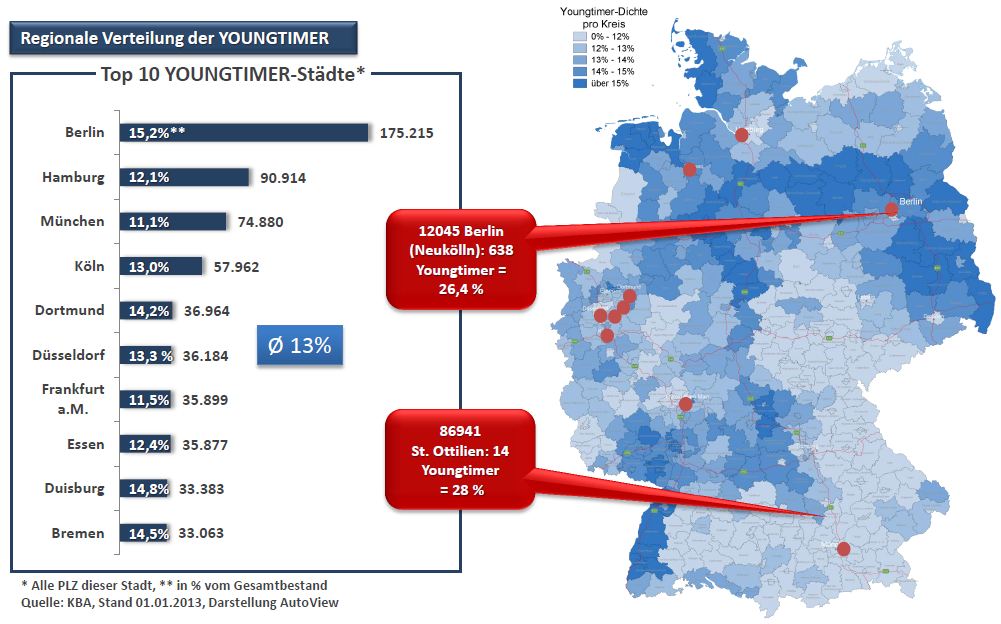
Dr. Ulrich Eichhorn, Geschäftsführer des Verbandes der Automobilindustrie (VDA), betonte: „In Deutschland wurde das Automobil vor über 125 Jahren erfunden. Die starken Marken unserer Hersteller und Zulieferer leben und pflegen diese große Tradition. Damit wird der Markenkern gestärkt. Die Historie stiftet und prägt Markenidentität. Sie ist ein wesentlicher Bestandteil zur Markendifferenzierung, sie gibt Orientierung und schafft Vertrauen. Diese lange und erfolgreiche Geschichte hat dazu beigetragen, dass der deutsche Automobilbau ein eigenes Gütesiegel erhalten hat, das mit ‚Made in Germany‘ umschrieben ist.“
Mit den Oldtimern werde ein Markenversprechen eingelöst: „Diese Fahrzeuge belegen in einer sehr emotionalen Weise die klassischen Werte wie Qualität und Langlebigkeit, Innovation und zeitloses Design. Deswegen pflegen die Hersteller ihre historischen Modelle“, so Dr. Eichhorn.
Bereits 2007 habe der VDA den Bereich „Historische Fahrzeuge“ eingerichtet. In einem Ausschuss zu diesem Thema treffen sich die Traditionsverantwortlichen der Pkw-Hersteller und einiger Zulieferer, um sicherzustellen, dass auch künftig Oldtimer auf öffentlichen Straßen fahren können. Dr. Eichhorn sagte: „Dabei werden drei Stoßrichtungen verfolgt: Stärkung des Images von Oldtimern in der Öffentlichkeit, enger Kontakt zu den Entscheidern in Berlin und Brüssel, um die Interessen der Oldtimer zu wahren, und Sicherstellung der technischen Versorgung dieser Fahrzeuge.“
Dr. Thomas Almeroth, Geschäftsführer des Verbandes der Internationalen Kraftfahrzeughersteller (VDIK), betonte: „Die Bedeutung von Young- und Oldtimern im deutschen Markt nimmt stetig zu. Für unsere VDIK-Mitgliedsunternehmen, die Repräsentanten der internationalen Automarken in Deutschland, wird dieser Markt unter den Aspekten Markenbildung, Markenpflege und Markenbindung immer stärker auch zum Wirtschaftsfaktor. Daher hat sich der VDIK, der bereits seit längerem Mitglied im ‚Parlamentskreis Automobiles Kulturgut‘ ist, mit VDA und ZDK gemeinsam auch an dieser Studie beteiligt. Auf der AUTO MOBIL INTERNATIONAL (AMI), die vom 30. Mai bis 8. Juni 2014 in Leipzig stattfindet, wird sich auf Initiative des VDIK ein Sonderausstellungsbereich umfangreich dem Thema historische Fahrzeuge/Oldtimer widmen.“
Gerd Heinemann, Geschäftsführer BBE Automotive, präsentierte die Studie und betonte: „Das Segment der Autofahrer, die ihren Youngtimer täglich nutzen, macht zwar 61 Prozent des Fahrzeugbestands aus, ihr Anteil an den Gesamtausgaben beträgt jedoch nur 37 Prozent. Fast zwei Drittel (63 Prozent) des Ausgabenvolumens tätigen die Besitzer der Oldtimer und Freizeit-Youngtimer: Sie betrachten ihr Auto mit leidenschaftlicher Emotionalität und begründen die Ausgaben als lohnenswerte Investition in ihr Lieblingshobby.“
Der Markt von 14,1 Mrd. Euro umfasse Wartungs-, Reparatur- und Restaurationskosten ebenso wie Ausgaben für Kfz-Versicherungen, Reifen, Felgen und angrenzende Produktbereiche wie etwa Kleidung, Automobilia oder die monatlichen Unterstellkosten und Ausgaben im touristischen Bereich.
Laut Heinemann dominieren den heimischen Oldtimer-Bestand die Marken Volkswagen und Mercedes-Benz mit 89.000 bzw. 80.000 Fahrzeugen. Als erste europäische Importmarke findet sich Fiat auf Platz 7. Die Top Fünf führt der VW-Käfer an, gefolgt von Mercedes W123, Opel Kadett sowie Mercedes-Benz Strich-8 und Mercedes-Benz SL 107. „Wir sind davon überzeugt: Auch wenn Importmarken heute im Oldtimerspektrum noch eine geringe Rolle spielen, so sollte das Potenzial dieser Marken nicht unterschätzt werden. Auch die Importmarken erkennen mehr und mehr die Chancen, die Young- und Oldtimer für den eigenen Markenkern bieten“, unterstrich Heinemann.
Anmerkung der Amicale:
Wir haben die deutschen Citroën- und Panhard-Clubs bzw. ihre Mitglieder frühzeitig um Unterstützung dieser Studie gebeten und sind informiert worden, daß von den Liebhabern französischer Automobile eine über den repräsentativen Durchschnitt hinausgehende Beteiligung erfolgt ist. Danke noch einmal auch von unserer Seite an diejenigen, die diese Studie mit ihren Daten unterstützt haben! 🙂
Download der Details:
Studie zum Youngtimer- und Oldtimer-Markt Deutschland
—–
First study about the vintage car market in Germany
The number of vintage vehicles (read: classic cars) in Germany has grown in the past five years continuously by an average of 8 percent YoY and currently counts more than 6.5 million vehicles. The market for classic cars represents an annual turnover of 14.1 billion Euro and includes maintenance and repair of vehicles, which are cars between the age of 15 to 29 years (German naming: “Youngtimer”) or those 30 years and older (vintage cars, German name: “Oldtimer”), and this number also includes expenditures related to this context. The purchase price or value of the vehicles is not yet included.
Cars older than 20 years do account for 14 percent of the total car and privately used truck volume in Germany (overall 44.7 million vehicles). In the coming years a further growth is expected. This is the result of the market study “Wirtschaftsfaktor Young- und Oldtimer“ (translated: “classic cars: an economic factor”) by the BBE Automotive GmbH on behalf of VDA (Verband der deutschen Automobilindustrie / Association of the German Automotive Industry), VDIK (Verband der internationalen Kraftfahrzeughersteller / Association of International Motor Vehicle Manufacturers), ZDK (Zentralverband Deutsches Kraftfahrzeuggewerbe / German Federation for Motor Trades and Repairs), Bosch, Vredestein, FSP (partner of TÜV Rheinland) , Wuerttembergische insurance, Santander, the trade magazine “Oldtimer Markt” and the automobile association AVD (Autmobilclub von Deutschland). This is the first time that comprehensive and reliable data about the market for Classic Cars in Germany has been aggregated.
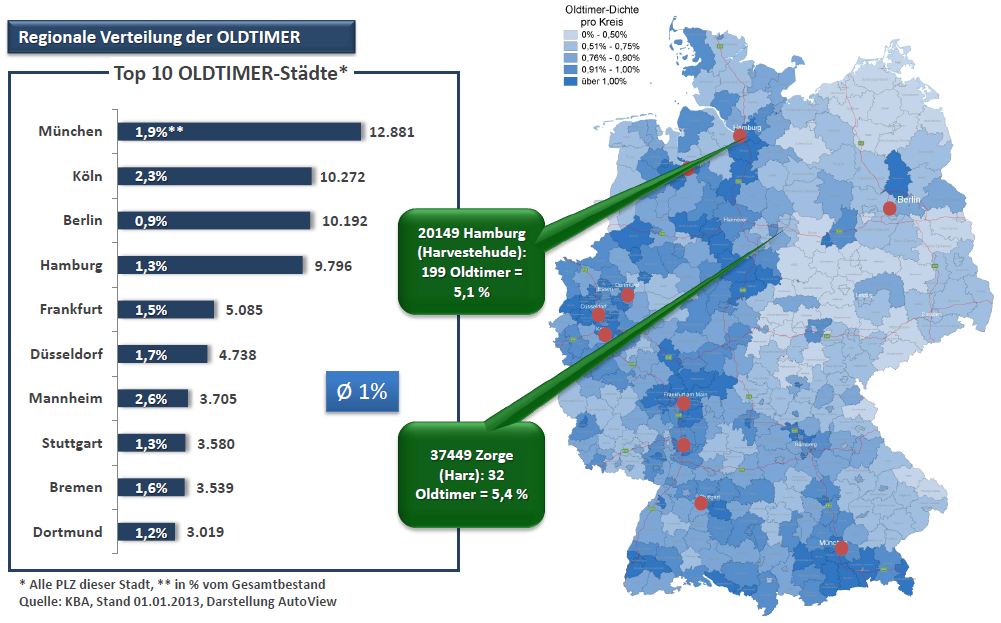
At a joint press conference in Frankfurt am Main the VDA, VDIK and ZDK together with BBE presented the study which has prepared a more in-depth anaylsis of classic cars based on data from the Federal Motor Transport Authority (KBA, Kraftfahrtbundesamt Flensburg), a nationwide survey conducted with more than 1,700 classic car drivers and also analyzing the comprehensive range of over 13,000 vintage vehicles’ owner changes.
Robert Rademacher, president of the German Federation for Motor Trades and Repairs (ZDK), said: “The study shows that there are three groups in the market for classic automobiles: the genuine vintage car with an age of 30 years and older; the Youngtimer cars, used as leisure vehicles, and finally the more than 15-year-old cars that are still in daily use, despite of their advanced age”. It is remarkable how strong the market is divided into “Emotion” and “Rationalism”. He calls 39 percent of vehicles to be the “real” vintage cars (620,000 units) or youngtimers (1.94 million) which are used primarily in leisure time; 61 percent (3.98 million units) are older vehicles that are still used on a daily basis.
“Those who drive their 15 year or older car on a daily basis, are dependent on this type of cost-saving individual mobility. The other group, i.e. the holder of classic cars or youngtimers who use these cars only during free time, live the “Fascination Automobile”. They have a strong emotional attachment to these old vehicles. And they spend significantly more money for maintenance, preservation and maintenance of each vehicle: on average, there are almost 5.300 Euro spent annually on those 30+ year old cars, while the owner of Youngtimers who use their car on their leisure time invests around 2.900 Euro per year, and while the every-day-driver is only spending about 1.300 Euro per year on his car” said Rademacher. Fuel costs and road tax are not included.
The average value of the car determined by BBE as part of the survey also reflects this: For 30+ aged cars the value is around 19.600 Euro, at leisure Youngtimers around 11.400 Euros and the value of recent classics that are still driven daily only is to an average of about 2.050 Euro. Accordingly, the annual mileage is different: With 30+ year old classic cars there are almost 2.600 kilometers spent each year, the leisure youngtimers count around 6.900 km, while classic cars that are driven daily even have an annual mileage of ca. 11.600 km.
Both for the automotive manufacturers as well as for the motor vehicle industry both groups are of importance: “The driver of an old used car is going to buy in a few years a younger used car – and one day a new car. So we should take serious especially those customers who currently drive older cars to work every day in the same way as the car enthusiasts who invest a lot for their beloved classic car and its maintenance”said Rademacher.
The fascination of classic cars is one that nobody could escape from, says the ZDK president: “One experiences this every year at the numerous classic car rallies and trips in the spring and summer, it can be experienced during the trade fairs, and it reflects the activities of the classic car clubs and the manufacturers with their fascinating museums.”
“The importance of the market for classic cars is growing – last but not least for the specialist workshops in the German automotive industry. The automotive industry with its nearly 38.000 enterprises cares of course to ensure individual mobility for all mentioned customer groups – and last but not least offers modern replacement for daily users of classic cars” underlined Rademacher.
Meanwhile, many car dealerships and repair shops would have recognized that the classic cars also is a business area with future potential. Nationwide, there are over 1.500 enterprises that are dedicated to classic cars only in Germany. “The requirements for repair, maintenance and restoration of classic cars are particularly high. It depends on specialized knowledge and skills, coupled with experience in any motor vehicle operation which are not present in just any car repair shop” said the ZDK president.
“Therefore, we have set certain standards in the automotive industry, which must be met by an enterprise if it wants to be associated with the additional attribute “Fachbetrieb für historische Fahrzeuge” (translated: “enterprise specialized on historic vehicles”). This attribute tag is awarded since 2009 to companies that meet these contractual standards for the maintenance and repair of historic vehicles. And the compliance to these standards is regularly reviewed. Meanwhile, there are nationwide around 500 of such specialized companies and about 50 trained experts who create their certification” Rademacher said.
Who wants to maintain and repair classic automobiles must ensure to get the knowledge about the cars of yesterday and share them. “Therefore, it is very good to see that now about 60 young automotive mechatronics are participating in the pilot project to gain additional qualification for vintage and classic cars technicians. We want to make the young generation of our budding professionals ready for the future business with the heritage of classic automobiles” underlined the ZDK president.
Dr. Ulrich Eichhorn, Director of the Association of the Automotive Industry in Germany (VDA), said: “In Germany, the automobile was invented over 125 years ago. The strong brands of our manufacturers and suppliers live and maintain this great tradition. Thus, the core brand is strengthened. The history instigates and shapes brand identity. It is an essential part of brand differentiation, it provides orientation and creates trust. This long and successful history has contributed to the German automotive industry now has its own seal of approval that is circumscribed with ‘Made in Germany’.”
With vintage cars, a brand promise will be redeemed: “These classic vehicles are an equivalent in a very emotional way for values such as quality and durability, innovation and timeless style. Therefore, manufacturers maintain the heriage of its historical models” says Dr. Eichhorn.
As early as 2007, the VDA has established a business section related to “historic vehicles . In a committee related to this subject, the heritage responsibles of the car manufacturers and some suppliers meet on a regularly basis to ensure that also vintage car can continue to drive on public roads in the future. Dr. Eichhorn said: “There are three main areas being addressed: 1. Strengthening the image of vintage cars in public, 2. stayint in close contact with the governmental decision makers in Berlin and Brussels in order to protect the interests of classic cars, and 3. assuring the technical support and supply of these vehicles”.
Dr. Thomas Almeroth, Managing Director of the Association of International Motor Vehicle Manufacturers (VDIK) said: “The importance of youngtimers and vintage cars in the German market is constantly growing. For our VDIK member companies, the representatives of the international car brands in Germany, this market plays a increasingly growing economic role under the aspects of brand building, brand management and brand loyalty. Therefore the VDIK has taken an intiative together with VDA and ZDK to execute this story, as we are also member in the “Parlamentskreis Automobiles Kulturgut” (parliament committee for the automotive heritage). On the fair “AUTO MOBIL INTERNATIONAL (AMI)”, this year held from 30 May to 8 June 2014 in Leipzig, we will focus on the initiative of VDIK and present a special exhibition area extensively reflecting the topic of historic cars / classic cars.”
Gerd Heinemann, CEO of BBE Automotive, presented the study and emphasized: “The segment of motorists who use their classic cars on a daily basis makes 61 percent of the vehicle fleet, but its share of total expenditure is only 37 percent. Nearly two-thirds (63 percent) of the expenditures are done by the owners of vintage and classic cars: they look at her car with passionate emotion and justify the expenditure as a worthwhile investment in their favorite hobby.”
The market of 14.1 billion Euro encompasses maintenance, repair and restoration costs as well as expenses for car insurance, tires, rims and related product areas such as clothing, automobilia or monthly parking costs and expenses in the tourist sector.
According to Heinemann, domestic vintage inventory is dominated by the brands Volkswagen and Mercedes-Benz with 89,000 resp 80,000 vehicles. As the first European import brand, Fiat is found at No. 7. The top five list of vintage cars is being led by the VW Käfer (“old Beetle”), followed by Mercedes Type W123, Opel Kadett and Mercedes-Benz /8 and Mercedes-Benz SL Type 107. “We are convinced that even if import brands still play a minor role in the vintage spectrum in Germany, the potential of these brands should not be underestimated. The import brands increasingly recognize the opportunities that offer classic cars for their own core brand value” emphasized Heinemann.
Additional comment by Amicale Citroën Deutschland:
we have been involved early by the VDA to involve German Citroën and Panhard clubs respectively their members into this study, and have been informed that a larger number of French car enthusiasts have been providing feedback to this study. Thank you to all participants to make this possible! 🙂
Study results (German spoken only, sorry):
Studie zum Youngtimer- und Oldtimer-Markt Deutschland



